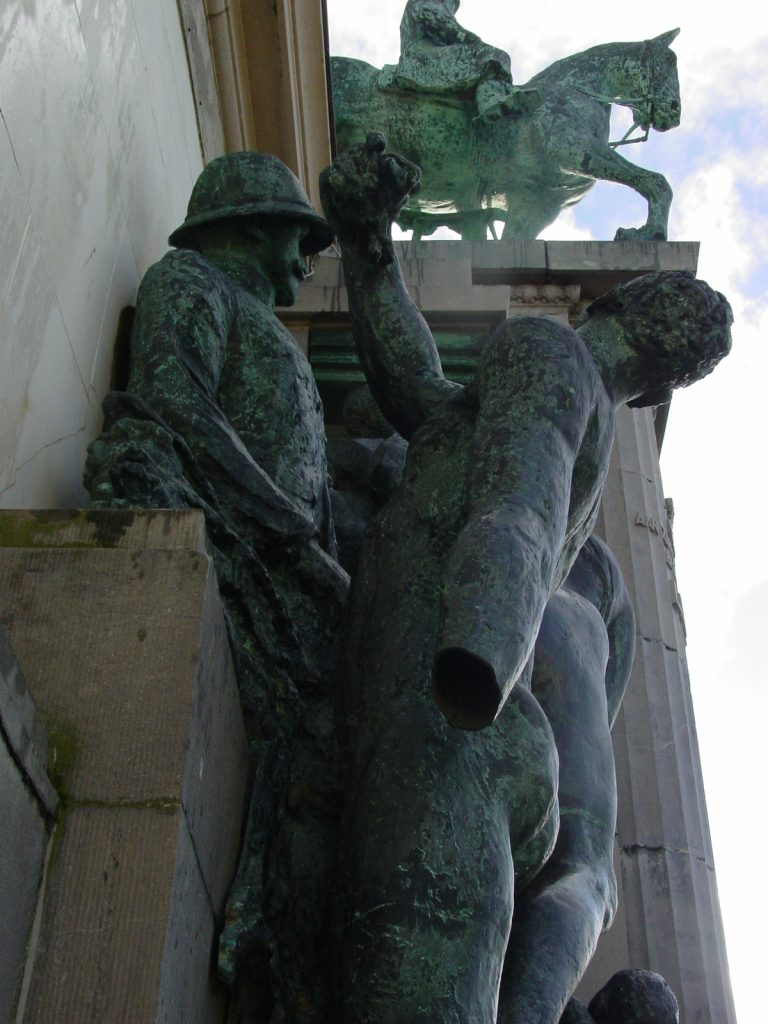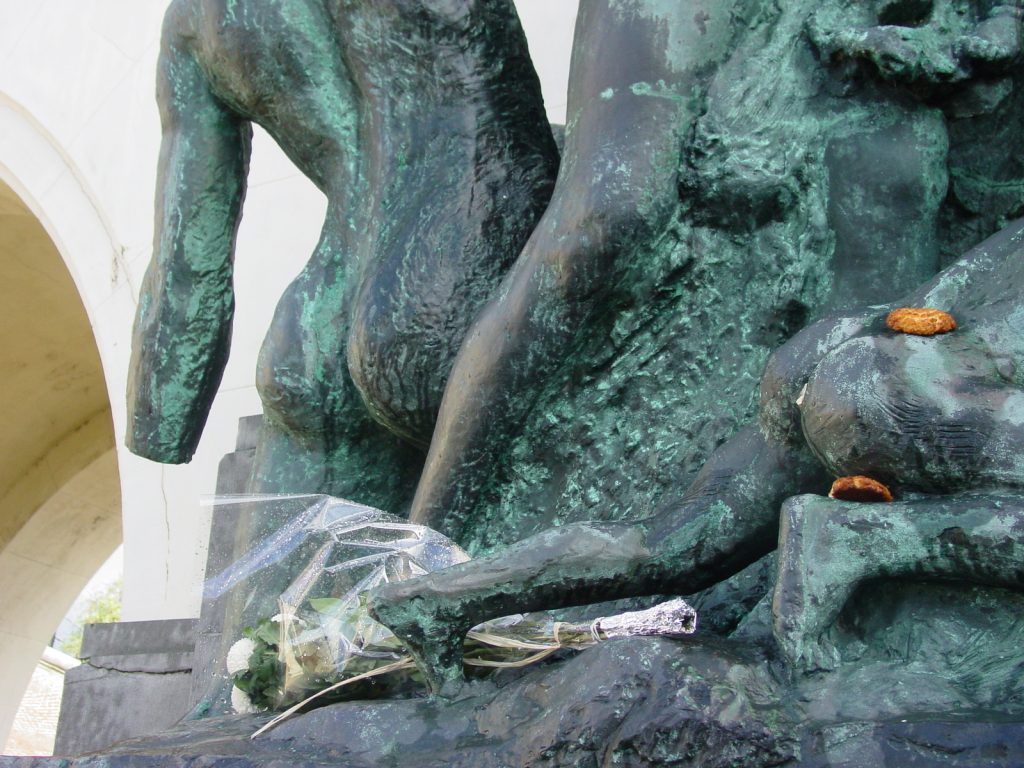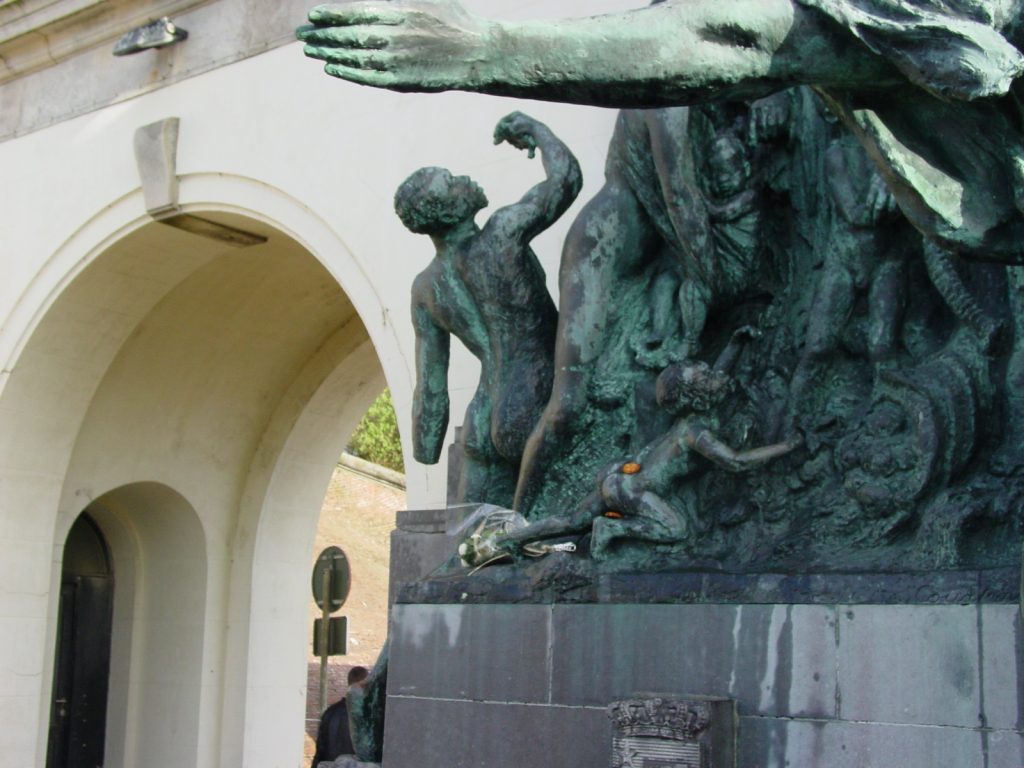Congo monument extended
For the website of the Afrika-Vereniging van de Universiteit Gent Lucas Catherine wrote a short article about the political corrections on the Congo monument in the Jubelpark.
The writer underlines the important role the location of the mosque which is just behind the monument plays in the history of the text correction. The purpose of this building, which was originally constructed for the Worldexhibition of 1897 in Tervuren containing a panoramic painting depicting the Nile near Cairo, was to stimulate Belgian financial investments in Egypt. In 1967, just before the Sixday War, Saudi-Arabia bought a large amount of weapons with arms factory FN in Brussels. After this important transaction King Boudewijn donated the pavilion, which was by that time in a bad condition, to the Saudian king Faisal. After the Ramadan War of 1973 Belgium recognised Islam as a religion, and during the following years the pavilion was converted into the Grand Mosque. Anyone who visits the mosque will see the Congo monument which is right at its doorsteps.
For many visitors the inscription “l’esclaviste Arabe / Arabische slavendrijver” on the Congo monument did not go unnoticed, and in 1989 the Imam of the mosque and the Jordan and Saudian ambassadors filed a complaint with the Centrum voor Gelijkheid van Kansen en Racismebestrijding and MRAX, demanding the removal of the words Arabische /l’arabe from the monument.
The article is placed in the section Gecontesteerd Kolonial Erfgoed. Karel Arnauts introductory text to the chapter mentions the parallel existence of the official academic discourse on colonial heritage and a popular iconoclastic undercurrent of ‘hands on’ actionist interest in colonial history. The purpose of this chapter is to collect interventions in the post colonial public space of the latter kind.

Besides the corrections on the Monument for Congo some other examples of attacked statues are given. In Januari 2004 a protestgroup called the Stoeten Ostendenoare altered the statue ‘Gratitude of the Congolese’ in Oostende which shows King Leopold II being worshipped by a group of among others African people. In remembrance of the practice of cutting the hands of slaves who were unwilling to work, the group removed a hand of an African figure.
In an article for newspaper De Morgen an anonimous group member remarks that the action was aimed at producing a ‘more realistic’ image of colonial history. For that same reason, the citycouncil decided not to replace the hand. This however did not mean victory for the Stoeten Ostendenoare: they offered to return the sawn off hand in exchange for a new commemoration plate next to the statue, which would not glorify the virtues of Leopold II, but would give a critical comment on the representation of colonial power; by showing a photographic image of slaves with chopped off hands.
here are some pictures of the statue in 2005:

A similar protest is developing around the statue of Generaal Jacques in Diksmuide. The action “Hands off of the General” demands a commemorative plaque in which the true nature of the general’s contribution to colonial violence as ‘fighter against slavery’ will be clarified.

©Wendy Morris
See earlier entries on the Monument for Congo in the Parc de Cinquantenaire:
Arabe in/out
l\’Arabe / arabische
(…) slavendrijver

